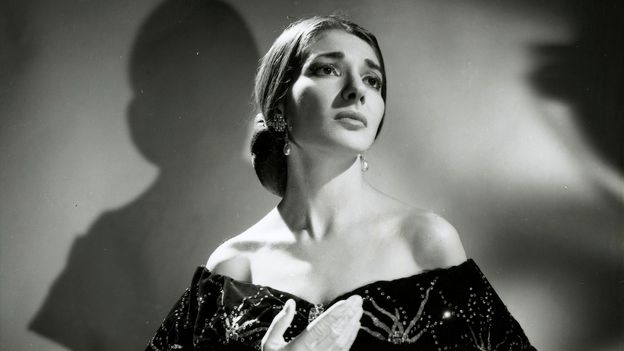Certainly, Callas’s private life drew heightened levels of mainstream publicity and intrusion, intensified by those who should have protected her but exploited her talents instead, including her parents and sister; her much older husband; her lover Aristotle Onassis (who would eventually marry Jackie Kennedy, but continue to pursue Callas). Such dramas – and her transformation from “ugly duckling” to fashion siren with flashing eyes and dazzling jewels – have fuelled decades of gossip columns and biographies. Ultimately, even Callas’s trolls are struck silent by her voice: captivating rather than simply pretty; fiery, imperious and tender in turn.
The defining diva
The image of Callas as an archetypal diva, and the notion that the goddess-star should suffer for her art, is loaded; there is no equivalent that positions a male divo on quite the same pedestal, or exposes them to the same judgements. Yet Callas did arguably channel real-life trauma and conflict into her musical delivery, and seemed bound by the notion of “destiny”.
Her exacting standards underpinned a high-maintenance reputation; she also made no secret of her impoverished upbringing or early career. “Be careful when you say ‘ghetto’… music comes from there,” she told French journalist Philippe Caloni in her final interview (1977). “I’ve almost never seen a great musician who had an upper-class background. There’s something good about ghettos because if you come from there, it makes you want more. It makes you say, ‘One day I’ll be someone’.”
Callas is featured in a major group exhibition, Diva, at London’s V&A Museum until April 2024; the show reframes the “diva” concept, from 19th-Century opera stars to contemporary A-listers, with highlights including costumes from Callas’s final performance at the Royal Opera House, as well as legendary recordings. Exhibition curator Kate Bailey explains: “Callas sits as this kind of personification of ‘diva’ at a particular moment in time; in the mid-20th Century, you have this emerging second wave of feminism, where the ‘diva’ explodes into other music genres, but also draws from the 1830s, because she really made that whole style of [bel canto] singing fashionable again.


